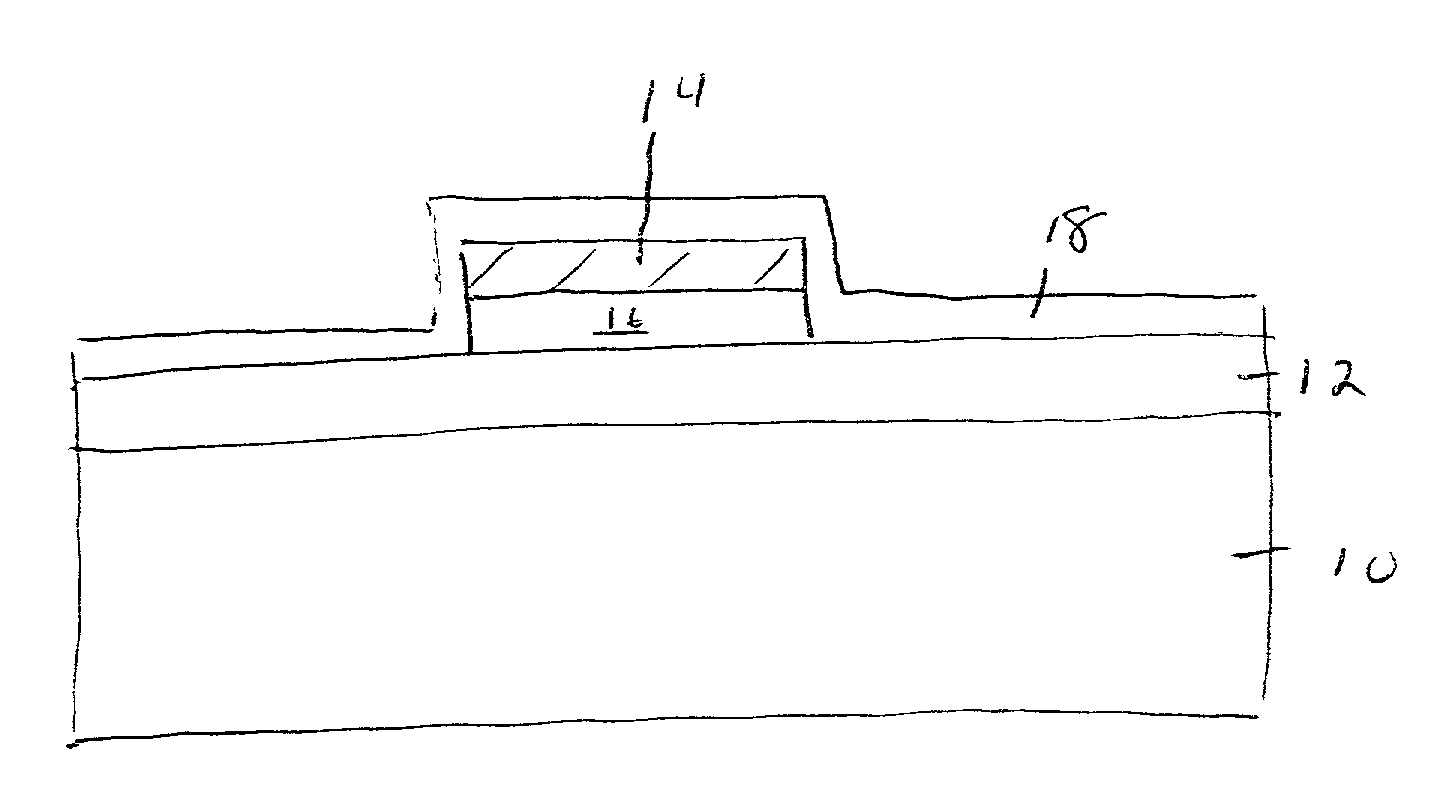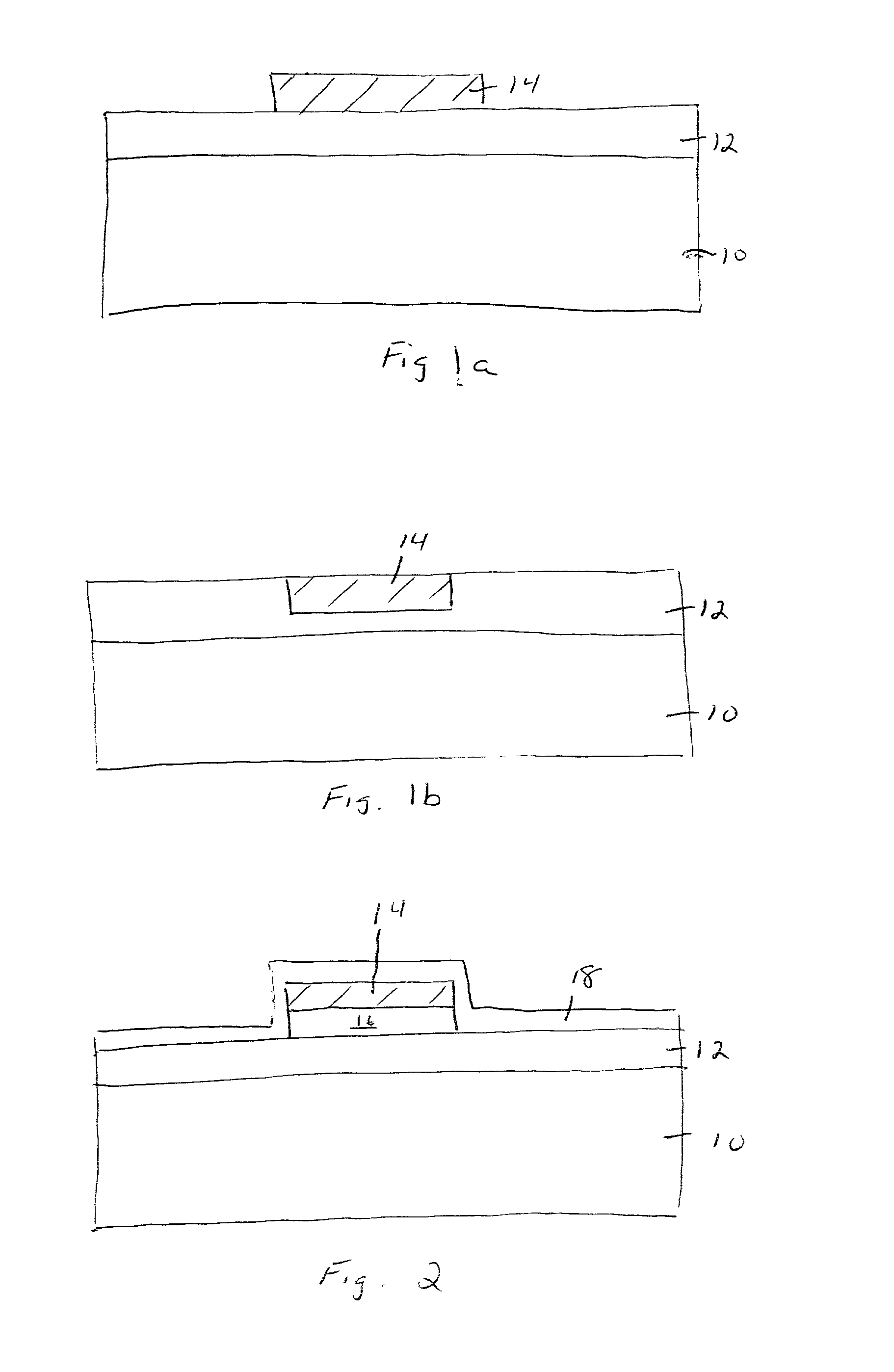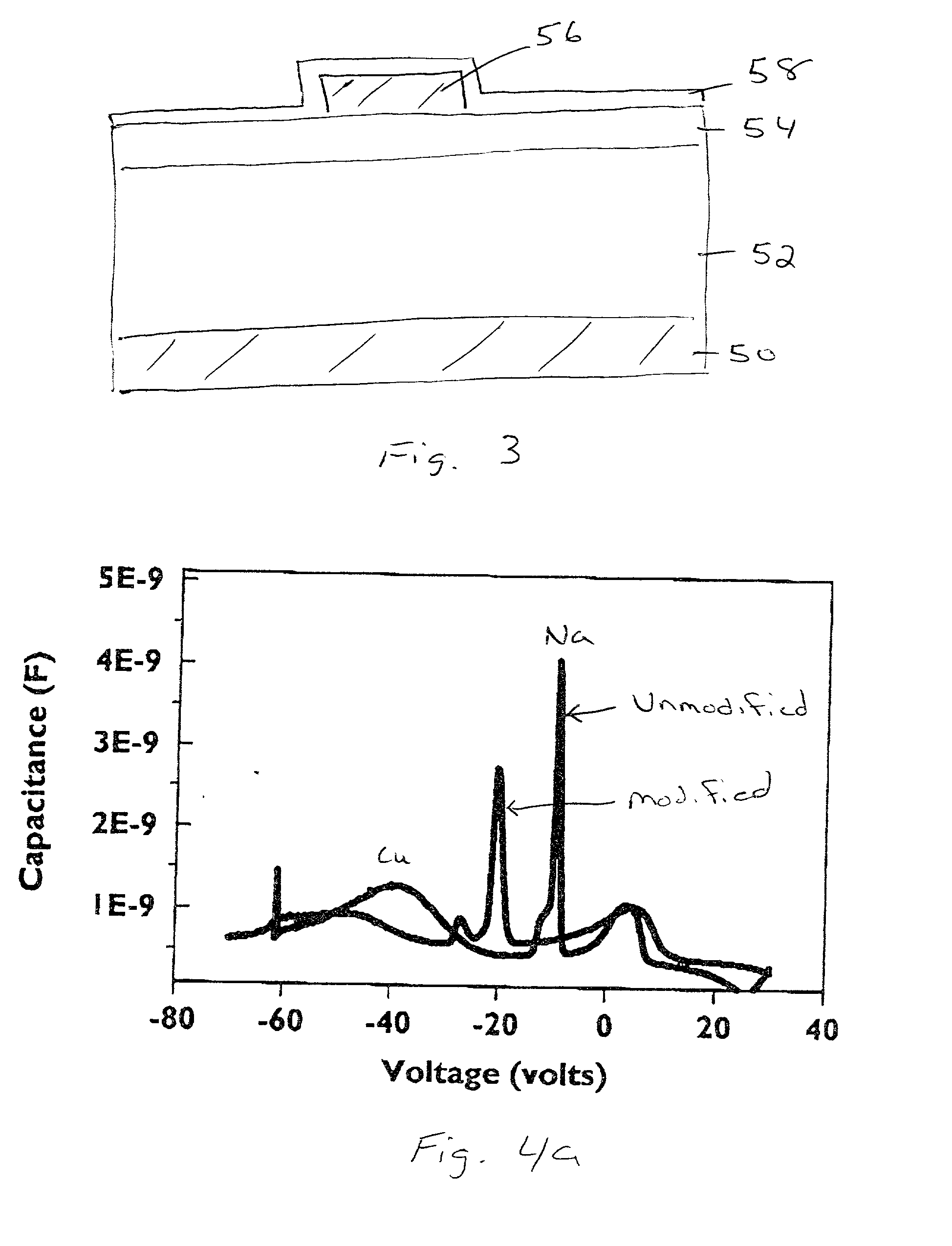Low k dielectric materials with inherent copper ion migration barrier
a technology of low k dielectric materials and migration barriers, which is applied in the direction of electrical apparatus, semiconductor devices, semiconductor/solid-state device details, etc., can solve the problems of reducing the overall dielectric constant reducing the performance of the chip, and increasing the overall dielectric constant performan
- Summary
- Abstract
- Description
- Claims
- Application Information
AI Technical Summary
Benefits of technology
Problems solved by technology
Method used
Image
Examples
Embodiment Construction
[0036] In this example, the following studies were performed on structures which contained the interlayer dielectric of the present invention, i.e. thermosetting polyarylene ether containing a phthalocyanine derivative, i.e. 2,9, 16, 23-tetra-tert-butyl-29 H, 31 H phthalocyanine, as an additive, and comparison was made to structures that contained a conventional unmodified interlayer low k dielectric (thermosetting polyarylene ether without an additive).
[0037] Bias Thermal Stress (BTS) Test
[0038] BTS tests were used as an accelerated reliability test method for degradation of the above-mentioned interlayer dielectrics.
[0039] To measure the metallic ion migration through the above-mentioned dielectric materials, a capacitor structure such as shown in FIG. 3 was employed. Specifically, the structure shown in FIG. 3 comprises a bottom W electrode 50, a Si substrate 52, an interlayer dielectric 54, Cu or Al electrode 56, and Si.sub.3N.sub.4 layer 58.
[0040] In the test, a voltage of abou...
PUM
| Property | Measurement | Unit |
|---|---|---|
| dielectric constant | aaaaa | aaaaa |
| thickness | aaaaa | aaaaa |
| thickness | aaaaa | aaaaa |
Abstract
Description
Claims
Application Information
 Login to View More
Login to View More - R&D
- Intellectual Property
- Life Sciences
- Materials
- Tech Scout
- Unparalleled Data Quality
- Higher Quality Content
- 60% Fewer Hallucinations
Browse by: Latest US Patents, China's latest patents, Technical Efficacy Thesaurus, Application Domain, Technology Topic, Popular Technical Reports.
© 2025 PatSnap. All rights reserved.Legal|Privacy policy|Modern Slavery Act Transparency Statement|Sitemap|About US| Contact US: help@patsnap.com



